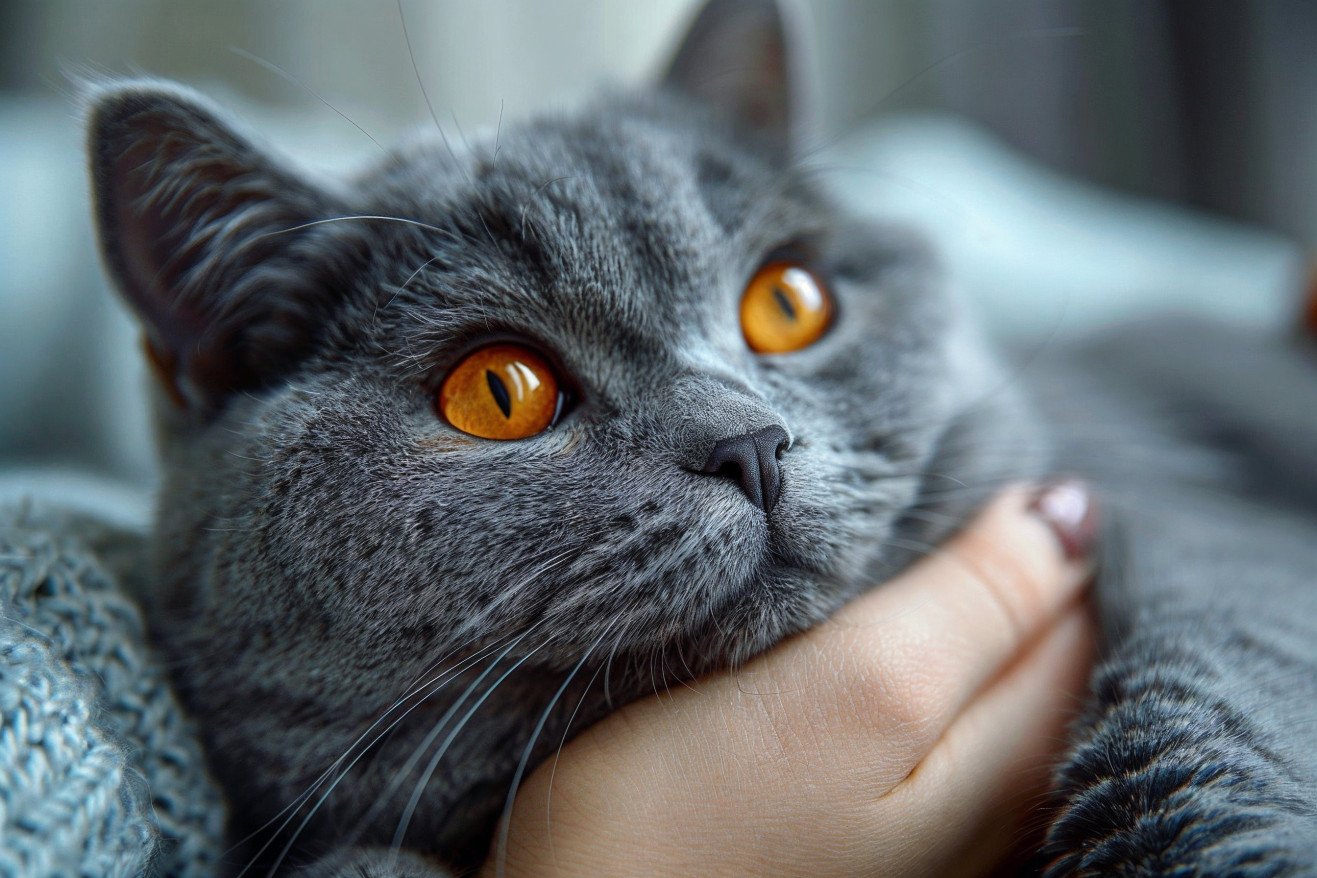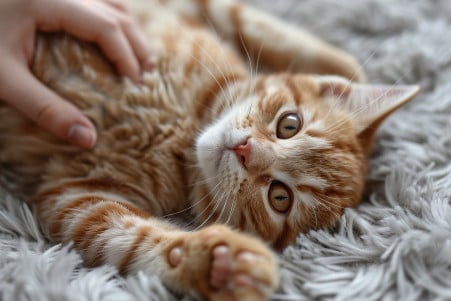Where Do Cats Like to Be Petted Most? Unlocking the Purr Zones
20 April 2024 • Updated 18 April 2024

Even though cats are known for their independence, there are certain places they like to be pet - but where are the magic spots that will make your kitty melt into a purring ball of happiness? Cats enjoy being petted in the areas where their scent glands are most concentrated, which include the base of their ears, under their chin, and around their cheeks and face. They don't like being petted on their stomachs or at the base of their tails.
This article will explore the findings of studies conducted by animal behaviorists and feline veterinarians to explain why cats prefer to be petted in certain areas. You'll learn how petting helps cats bond with their humans and even has positive effects on their health. Knowing where cats like to be petted can help you improve your kitty's quality of life and enhance the bond between you and your feline friend.
Where do cats like to be petted most?
The Science of Cats' Petting Preferences
The science of why cats like to be petted in certain places has to do with the location of scent glands and their importance in cat communication. Cats have a high concentration of scent glands in the head area, including the forehead, cheeks, and chin, as well as at the base of the ears - which is why they like to be petted there. When people pet cats in these areas, it helps them spread pheromones and other scents that help them bond with their owners.
Petting also causes the release of oxytocin, which is often called the "love hormone," in cats. This hormone helps cats feel more relaxed and comfortable, which helps them form a positive association with petting. On the other hand, the belly, paws, and base of the tail are often avoided because they are associated with mating and can lead to overstimulation.
In a study by Dr. Sarah Ellis, cats were more likely to show negative behaviors like hissing and biting when people petted them near the base of the tail, which is more sensitive because of its role in mating. This suggests that the dislike of being petted in this area is an evolutionary response, showing that cats' petting preferences are tied to their instincts and biology.
How to Tell What Your Cat Wants
Cats use a combination of body language to let their owners know when they want to be pet. According to the definitive guide on cat behavior and body language by Tuft + Paw, signs that a cat is enjoying being petted include purring, kneading, head rubbing, and relaxed eyes and ears. Signs that a cat is not enjoying being petted or is getting overstimulated include flattened ears, twitching tail, dilated pupils, and trying to get away.
It's important to always respect a cat's boundaries and stop petting if they start to show any signs of discomfort or aggression, such as hissing or swatting. As Purina explains, a cat that is scared will flatten their ears back, crouch, and have wide eyes. Paying attention to a cat's body language and responding accordingly can help you gain their trust and make sure that both you and the cat have a positive petting experience.
How to Establish a Positive Petting Routine
For cats that aren't used to being pet, it's important to start slow and let the cat take the lead in terms of physical contact. The Humane Society explains that the idea is to get the cats to the point where they can see each other and know that good things happen, which will create positive experiences. It can also be helpful to create a routine with feeding and playtime, as cats will start to associate these positive experiences with human interaction.
Positive reinforcement can also be used to encourage petting. BeChewy explains, that you can work on increasing the criteria for rewards, like letting the cat sit on your lap without holding on, to help the cat associate your presence with positive experiences. It may also be helpful to keep petting sessions short and sweet to avoid overstimulation, as suggested by The Wildest.
Most importantly, it's important to be patient and consistent, and to respect the individual needs and boundaries of each cat to build trust and a strong relationship. The Two Crazy Cat Ladies stress that cats like to interact on their own terms, so it's important to let them take the lead in terms of physical contact.
How Long and How Often Should You Pet Your Cat?
The length and frequency of petting sessions will depend on the individual cat. Since cats are known for their independence, it's important to let them dictate the terms of your interactions. That said, shorter sessions that occur more frequently are likely to be best for most cats to avoid overstimulation.
As PetMD explains, "several shorter play sessions tend to suit many cats better than one longer one." Signs that a cat is becoming overstimulated or that they've had enough petting include excessive purring, skin twitching, and turning their head away, according to Feline Fab.
Interactive play can help cats release pent-up energy so that they're more open to petting and other forms of physical affection, according to Catster. That said, it's important to pay attention to each cat's individual cues and preferences to ensure that petting is a positive experience and that it helps strengthen your bond.
Conclusion: Unlocking the Purr-fect Petting Experience
Cats have specific areas they enjoy being petted, and understanding these "purr zones" can lead to a more positive experience for both the cat and the owner. According to The Spruce Pets, once a relationship is established, cats often enjoy petting on the sides of the face, top of the head, neck, under the chin, along the sides of the body, on the shoulders, and towards the back. However, the belly, feet, legs, and tail are often off-limits.
Hill's Pet notes that the head, chin, and neck are typically a cat's favorite petting spots, as these areas contain concentrated scent glands. Cats use physical contact to communicate through pheromones, and petting can trigger the release of oxytocin, the "love hormone," promoting feelings of calm and well-being.
Cats also communicate their petting preferences through body language. Catster explains that signs a cat enjoys being petted include purring, kneading, and head rubbing, while flattened ears, twitching tail, and attempts to move away indicate discomfort. Respecting a cat's boundaries is crucial for building trust and a positive petting experience.
By tailoring the petting experience to each individual cat's needs and preferences, owners can provide a source of comfort and enrichment for their furry companions. With patience, consistency, and a willingness to learn, cat owners can unlock the purr-fect petting experience and deepen their special connection with their feline friends.


